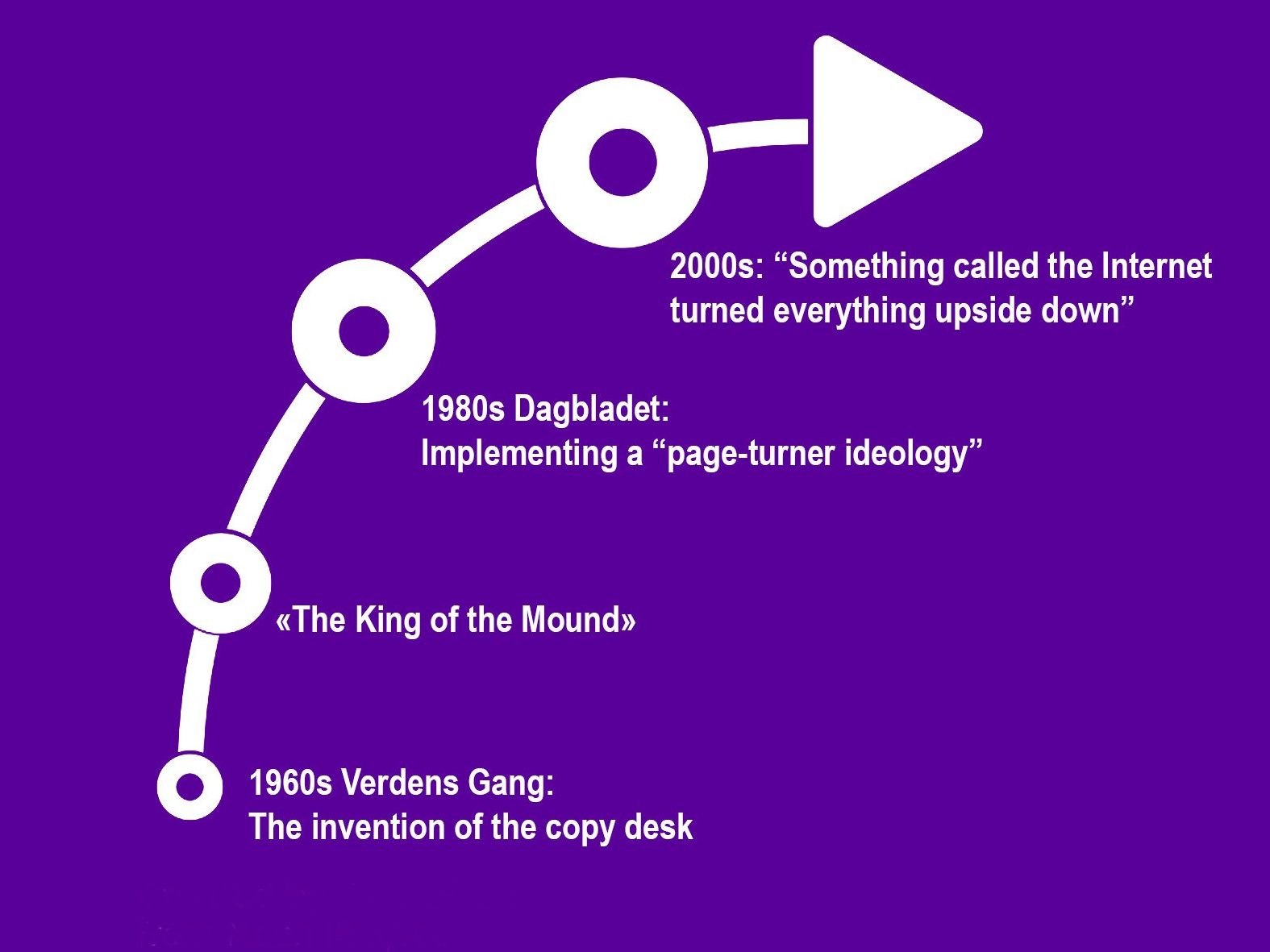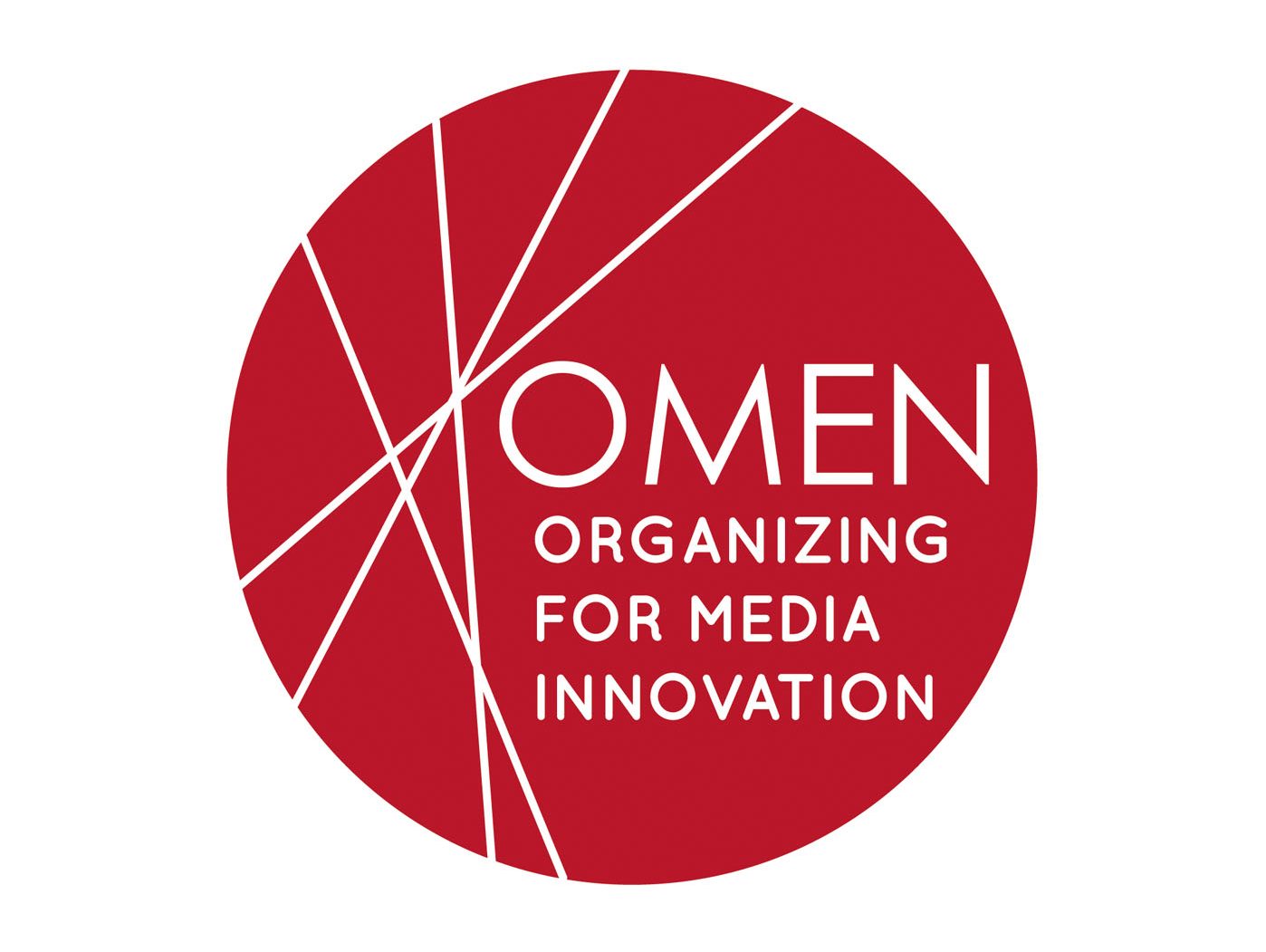
Throughout history several breaking points connected to technological innovation and new demands of competency, led to similar alterations in the news business. What role has the copy desk played in these central periods of change, and what has been the function of the copy desk when it comes to the newsrooms’ general ability to change and innovate, and secure freedom of speech in general? Will this historical knowledge of the role of the copy desk enable media organizations to better deal with future demands for change and innovation?
“Verdens Gang” during the 1960s: The invention of the copy desk
During the 1960s, the editorial production of the Norwegian newspaper Verdens Gang (VG) became centralized, and what is known as the desk was born. This centralization can be traced back to the mid-1950s and the introduction of a table where the editors were located. More and more of the stories and articles passed through this table, in order to be reviewed and included in an overall plan (Eide 1995).
«The King of the Mound»
The desk became essential in the newsroom. In VG, the desk during the late 1970s and 1980s was described as «the king of the mound. The desk had all the power. More or less». A metaphor which was used to decribe the essential role of the desk was that «the desk was the heart of the newspaper, which never closed an eye» (informant VG and Aftenposten).
The metaphor underlined the great importance of the desk when it came to reviewing articles, prioritize articles, present articles and initiate new cases.
The role of the desk varied, however, from newspaper to newspaper. In Aftenposten, during the same period, the desk was subject to a stricter editorial regime, and was expected to act in line with the conservative, non-sensational, tradition of this newspaper.
1980s Dagbladet: Implementing a “page-turner ideology”
The growing importance of the desk in the newsroom was strongly linked to the introduction of the tabloid format. The introduction of the tabloid format was, however, not just a change of format; it was part of a more comprehensive reorganization of the newsroom. Presentation and lay out became even more important. The front page became a poster for selling newspapers. In Dagbladet this happened in 1983/1984. A guiding principle for the desk during and after this process of “tabloidification” was to make the newspaper a page-turner. The source of inspiration for this strategy was the Swedish tabloid pioneer Expressen. In Swedish and Norwegian it was called “åfanisme” (“What the fuckism”): “If you start to read a tabloid newspaper, you are supposed to burst out ‘What the fuck!’. You was supposed to be enchanted by the article. Then, you should turn the pages, and forget time and place” (informant, Dagbladet).
2000s: “Something called the Internet turned everything upside down”
From 2003 digital publishing accelerated (Hjeltnes (red.) 2010, s. 267.) in Norwegian media. The desk became an important object of change. The traditional desk was designed for the newspaper in the true sense of the word: a newspaper made out of paper. However, digitalization changed the income flows, the making of the newspaper and, thus, the labor process. As an attempt to rationalize the labor process, newspapers introduces digital tools with the purpose of reducing the need to copy edit articles. This reduces the number of staff at the desk, and intensified the work for the remaining staff. The desk “has become a unit of production instead of a base for creativity”, one of the informants stated (Vårt Land).
Discuss the following statements:
- Knowledge about the past is useful and important in today’s newsrooms
- Knowledge about the past is necessary to deal with contemporary and future challenges
- The role of the copy desk is still essential
- The future is desk-less
- The copy desk: an assurance of quality in Norwegian newsrooms or an agent of commercialism?
